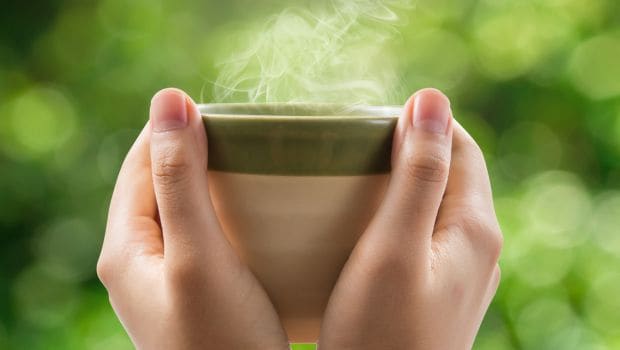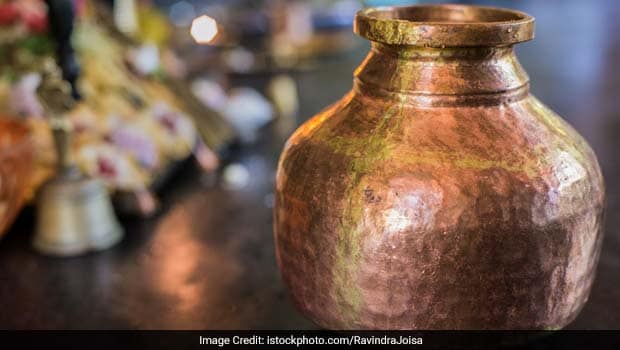
7 Ayurvedic Tips to Drink Water that You Didn't Know!
Are you drinking 8 glasses of water every day? If not, then now would be a good time to start. While not having sufficient water has many side-effects, it is equally important that we are mindful of 'how' this water is consumed. The principles of Ayurveda suggest that the way you choose to drink water also affects your overall health. Interesting, isn't it? Ancient Ayurveda has numerous theories regarding tips to drink water which have been followed over centuries.
According to the book, The Complete Book of Ayurvedic Home Remediesby Vasant Lad, water is the manifestation of consciousness. Water is fluid, heavy, soft, vicious, cold, dense and cohesive. It brings molecules together. Water is a chemical energy, which means it is a universal chemical solvent. Water exists in the body as plasma, cytoplasm, serum, saliva, nasal secretion, cerebrospinal fluid, urine andsweat. It is therefore necessary for absorption of nutrition and to maintain life; without it, our cells cannot survive. Considering how essential water is to human life, here are some handy yet important Ayurvedic tips to drink water.
Ayurvedic Tips to Drink Water
1. Sit Down to Drink Water Rather than Standing
It is a good idea to always sit and drink water rather than standing. By standing and drinking, you disrupt the balance of fluids in the body and this may lead to a greater accumulation of fluids in the joints causing arthritis. By sitting and drinking, yourmuscles and nervous system is much more relaxed and helps the nerves to digest food and other fluids easily. Your kidneys also pace the filtration process while sitting.

By standing and drinking water, you disrupt the balance of fluids in the body
2. Avoid Chugging All the Water at Once
2. Avoid Chugging All the Water at Once
Avoid gulping down large volumes of water in a single breath, rather take smaller sip, swallow, breathe and repeat throughout the day. This holds true while having your meals too. According to Ayurvedic expert, Dr. Akhilesh Sharma, "there are three doshasin the body - vata, pitta and kapha, and how you consume water must be in accordance with these doshas. People with vata prakruti should drink water only one hour after eating a meal. This will help their food digest in a better way. People with pitta prakrutican have small sips during meals to start their digestion process early and people withkapha prakurti should have water before taking meals so that they feel full and not eat more. This will help them lose weight easily."

Avoid gulping large volumes of water during meals and otherwise
3. Drink Room Temperature water, Warm is Even Better
3. Drink Room Temperature water, Warm is Even Better
Avoid ice chilled water that disturbs the ongoing process of digestion and puts off the fire. Cold water decreases the blood supply to various organs of the body further leading to constipation. Drinking tepid water can help in proper digestion and metabolism that promotes weight loss, relieves bloating and pain. According to Dr. Akhilesh, warm water helps in in controlling cholesterol levels and also keep the arteries clean.

Avoid drinking chilled water as it disrupts the process of digestion
4. Drink Only When You are Thirsty
4. Drink Only When You are Thirsty
Your body sends signals to you when it is in dire need of water. Ayurveda emphasizes on drinking water only when you feel thirsty. Every person has a different body, hence, drinking the same amount of water cannot be recommended to everybody. The body cannot absorb too much water intake; therefore it is imperative to know the thirst cues your body gives you. Measure your own drinking system without feeling too full.

Your body sends signals when it is in dire need of water
5. Know the Indicators your Body Gives You When You are Thirsty
5. Know the Indicators your Body Gives You When You are Thirsty
Your body gives you cues to let you know it needs water. One being, the color of urine, dark yellow color may indicate dehydration, while fairly clear and straw colored urine is a sign of a hydrated and satiated body. Dry chapped lips are one of the indicators of a dehydrated body. Notice these cues as these may turn into health problems.

Know the indicators that your body give you when it needs water
6. Drink Water First Thing in the Morning
6. Drink Water First Thing in the Morning
Ayurveda suggests that is a healthy habit to drink water first thing in the morning, which is known as Ushapan. It helps get rid of many diseases in the body. Drinking water in the morning helps in flushing all the toxins in the body and cleanses your intestines.

Start drinking water first thing in the morning
7. Drink Water Stored in Silver and Copper Vessels
7. Drink Water Stored in Silver and Copper Vessels
Ayurveda has always suggested drinking water stored in copper (tamba) and silver (chaandi) vessels. The water stored in these vessels has the ability to balance all threedoshas in the body and it does by positively charging the water. Dr. Akhilesh agrees and points out that copper has numerous antioxidants and anti-bacterial properties that help boost the immunne system of the body. It also has anti-cancer properties. Water in the silver vessel has the power to remove free radicals from the body and gives a cooling effect in the intestines and smoothens the process of digestion.

For more info....
https://food.ndtv.com/health/7-ayurvedic-tips-to-drink-water-that-you-didnt-know-1686718

For more info....
https://food.ndtv.com/health/7-ayurvedic-tips-to-drink-water-that-you-didnt-know-1686718
You Are Drinking Water the Wrong Way
